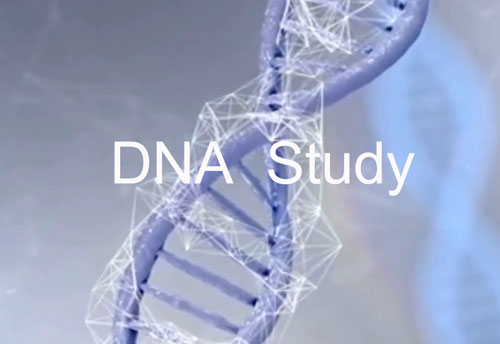I. Introduction
Sodium fluoride is a chemical compound that is widely used in various applications, including dental care, water fluoridation, and some industrial processes. However, concerns have been raised over the years about the potential link between sodium fluoride and cancer. In this article, we will explore the scientific evidence surrounding this issue and attempt to answer the question: Does sodium fluoride cause cancer?

II. Properties and Uses of Sodium Fluoride
A. Chemical Properties
Sodium fluoride has the chemical formula NaF. It is a white crystalline solid that is highly soluble in water. Sodium fluoride is a source of fluoride ions, which are known for their ability to strengthen tooth enamel and prevent dental cavities.
B. Uses
Dental Care
Sodium fluoride is commonly found in toothpaste, mouthwashes, and dental varnishes. It is used to prevent tooth decay by strengthening the enamel of teeth and making them more resistant to acid attacks from bacteria.

Note: The type of sodium fluoride used for dental care is the high purity grade sodium fluoride.
Water Fluoridation
Many communities add sodium fluoride to their drinking water to improve dental health. The optimal level of fluoride in drinking water is typically around 0.7 to 1.2 parts per million (ppm), depending on the climate and other factors.
Industrial Applications
Sodium fluoride is also used in some industrial processes, such as aluminum production, glass manufacturing, and as a pesticide.
Click to know more about sodium fluoride uses.
III. Studies on Sodium Fluoride and Cancer
A. Animal Studies
Many animal studies have been conducted to investigate the potential link between sodium fluoride and cancer. Some studies have shown that high doses of sodium fluoride can cause cancer in laboratory animals, while others have found no such link. However, it is important to note that animal studies may not always be directly applicable to humans, as the doses and exposure conditions may be very different.

B. Human Studies
There have been several human studies on the relationship between sodium fluoride and cancer. Some studies have suggested a possible association between fluoride exposure and certain types of cancer, such as bone cancer and osteosarcoma. However, these studies have been controversial, and the results have been inconsistent.
- Water Fluoridation Studies
Some studies have looked at the relationship between water fluoridation and cancer rates. While some studies have found no association between water fluoridation and cancer, others have reported a possible increase in cancer rates in areas with fluoridated water. However, these studies have been criticized for their methodological limitations and potential confounding factors.
- Dental Product Studies
Studies on the use of fluoride-containing dental products have also been conducted. Some studies have suggested that long-term use of fluoride toothpaste and mouthwashes may be associated with an increased risk of cancer, but again, the evidence is inconclusive.
IV. Mechanisms by Which Sodium Fluoride May or May Not Cause Cancer
A. Possible Mechanisms for Cancer Induction
- DNA Damage

Some researchers have suggested that sodium fluoride may cause DNA damage, which could lead to cancer. Fluoride ions have been shown to interact with DNA and cause mutations in laboratory studies. However, the significance of these findings in humans is still unclear.
- Oxidative Stress
Sodium fluoride may also cause oxidative stress in cells, which can damage DNA and other cellular components and increase the risk of cancer. Oxidative stress occurs when there is an imbalance between the production of reactive oxygen species (ROS) and the body’s ability to detoxify them.
- Immune System Suppression
Another possible mechanism by which sodium fluoride could cause cancer is by suppressing the immune system. A weakened immune system may be less able to detect and destroy cancer cells, increasing the risk of cancer development.
B. Counterarguments Against Cancer Induction
- Lack of Strong Evidence
Despite some studies suggesting a possible link between sodium fluoride and cancer, the overall evidence is weak and inconsistent. Many large-scale epidemiological studies have found no association between fluoride exposure and cancer.
- Dose-Response Relationship
To identify if a substance can be considered a carcinogen, there should be a clear dose-response relationship between exposure and cancer risk. However, in the case of sodium fluoride, there is no consistent evidence of such a relationship.

- Other Factors
It is also important to consider that many of the studies on sodium fluoride and cancer have not accounted for other potential confounding factors, such as lifestyle factors, exposure to other chemicals, and genetic predisposition. These factors could potentially influence the results and make it difficult to determine a direct link between sodium fluoride and cancer.
V. Regulatory Considerations
A. Safety Standards
Many countries have established safety standards for sodium fluoride in drinking water, dental products, and industrial applications. These standards are designed to ensure that exposure to sodium fluoride is within safe limits and does not pose a significant risk to human health.
B. Monitoring and Research
Regulatory agencies also monitor the safety of sodium fluoride and conduct research to assess its potential risks. This includes evaluating new scientific studies and considering any emerging evidence on the relationship between sodium fluoride and cancer.
VI. Conclusion
The question of whether sodium fluoride causes cancer is a complex and controversial one. While some studies have suggested a possible link between sodium fluoride and cancer, the overall evidence is weak and inconsistent. There is currently no conclusive evidence to support the claim that sodium fluoride is a carcinogen.
However, it is important to continue to monitor the safety of sodium fluoride and conduct further research to better understand its potential risks. In the meantime, individuals can take steps to reduce their exposure to sodium fluoride by using fluoride-free dental products and drinking water from sources that are not fluoridated. Additionally, maintaining a healthy lifestyle, including a balanced diet, regular exercise, and avoiding exposure to other known carcinogens, can help reduce the risk of cancer.
Other concerns about fluoride sodium:

